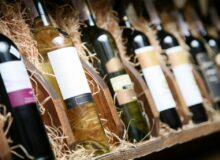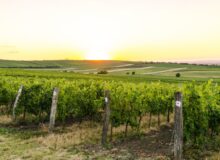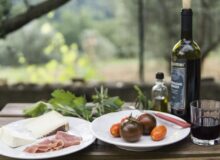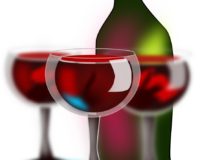Champagne is the most mercurial of French wines…but Does Champagne age?
Rioja wine: Crianza, Reserva, and Gran Reserva. Each of the levels increase the grape quality
New Cocktail Appreciation, Raising the Bar, the South taking a a Front Seat
Just like wine, whiskey requires a master blender to take an strong and interesting palate. Often he or she practices an old art of mixing to bring things into balance for the final product and like second and third wines there needs to be constant sampling to be able to separate the exceptional from the acceptable. Today’s bartenders are similar in the same way.
There is definitely a southern cocktail revolution going on out there. Whether it’s a restaurant, saloon, neo-speakeasies, hotel bars or club a barrier has definitely been broken. I’ve been all over the south in the past year or so; it can be Asheville NC, Mobile Alabama, New Orleans LA, Charleston SC across the low country, Oxford Mississippi, Decatur GA, down all the way to Tampa FL. There’s a movement of fakelore or folklore whatever you want to call it that has folks paying homage, exhuming lost recipes, trying to respect the old ways. It’s even seething into the mainstream restaurants….and let’s be clear; a lot of labor goes into conjuring a proper cocktail and the food the goes with it (but that’s another story).
It’s happening. So ask for a Gin Fizz, a bottled Sazerac, a Julep del Professore, Rum Negroni or a Rum Old- Fashioned or any of these playful libations and see what you are in store for. It’s going to be a modern rebound of a drink that’ll be refocused on the classic with a liberating variation. Take a chance trust the uncommon palate.
2015 Bordeaux looks like a Big Winner; Get ready to stock up; Margaux may be the Champ of Vintage.
Special Report, 2017 was a year full of some memorable wines. Here are 5 of my favorites
2017 was a year full of some memorable wines. Here are 5 of my favorites of the year I’ve handpicked. Each year I try to come up with wines that stand out for me and try to describe them for you. My top 5 wines for the year are 4 from California made my list this year and 1 great value from Australia:
An intense concentrated aroma of blackberry, blueberry. Boysenberry pie. Structured. Pepper spice on the finish, the oak gives off smokiness to the nose cacao chocolate to the finish.
Sweet red cherry, plum, dried flowers, tea and tobacco flavors. Soft and cagey, totally approachable; Firm tannin yet subtle, Very polished.
Over performing Champ’ of the year. One of the strongest efforts. eucalyptus, cedar and blackberry jam. Underbrush tones; Multilayered chewy tannins, fresh, good acidity with good fruit finish.
Great aromatics and intense fruit. Wild berries, rich raspberry fruit ; powerful wine. Hints, of burnt cherry pit, smoke and cedar Elegant big and plush.
Pierce’s Diease…What is it and Why It’s important to fight it
- Delayed leafing in the spring
- Shoot dwarfing
- Marginal scalding of leaves
- Leaf mottling and interveinal chlorosis and necrosis
- Wilting and premature coloring of fruit
- Uneven maturity of canes
- Eventual death of the root system
- From IFAS Database (EDIS)
- A fastidious bacterium, Xyllella fastidiosa
- Grape
- Southeastern United States
- California
- Southern Ontario
- Spread by leafhoppers known as sharpshooters
- Control options: none
Wine and War: The French, the Nazis, and the Battle for France’s Greatest Treasure…A great book to thumb through…
I came across this paperback. over the spring and it’s quite a read. Check it out if you can find it. It’s called; Wine and War: The French, the Nazis, and the Battle for France’s Greatest Treasure.
The synopsis is…
France fell to the Nazis and almost immediately the German army began a campaign of pillaging one of the assets the French hold most dear: their wine. Like others in the French Resistance, winemakers mobilized to oppose their occupiers, but the tale of their extraordinary efforts has remained largely unknown–until now.
The book came out in 2002.
This is the thrilling and harrowing story of the French wine producers who undertook ingenious, daring measures to save their cherished crops and bottles as the Germans closed in on them. Wine and War illuminates a compelling, little-known chapter of history, and stands as a tribute to extraordinary individuals who waged a battle that, in a very real way, saved the spirit of France.
It’s a good book to thumb through as well. It’s like an adventure story and fits in good with other World War II books.
When you drink a White Wine. Ask if it has Malolactic Fermentation (MLF). Better yet ask if the Red Wine has it.
The California 2015’s quality is very high but the quantity is low. So, keep an eye out for them at the store.
The California 2015 vintage is turning up as one to seek out due to it’s scarcity. Keep an eye on your favorites and snag them. It’s great juice.







